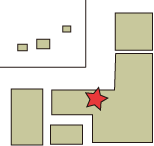 |
 |
Warazouri
These Warazouri were made by my grandfather. But no one uses them. Few people wear them now. Warazouri were used about 80 years ago, but now they are not used. When my grandfather was young, many people made their own Warazouri. |
|
|
 |
 |
Geta (Men's)
These are my father's Geta. We make three holes in a piece of wood for Hanao (ropes or cloth) to go through. We put them on without socks (Tabi). Usually we put on them on barefoot. There are many different kinds. Most people used them commonly in daily life. |
|
|
 |
 |
Geta (Women's)
These are mine. I bought them in Fukuyama City, Hiroshima. Most Geta are made in Fukuyama City. I usually wear these when I put on my Yukata (a simple cotton kimono for summer). |
|
|
 |
 |
Tabi
These are traditional Japanese socks. The most common color is white. They are usually made from cotton. They are like "split socks", that is, the big toe is divided from the other toes. Most Tabi are made in Saitama. |
|
|
 |
 |
Zouri (Women's)
These are usually made from cork. We use Zouri when we wear formal clothes. I usually wear mine with a formal Kimono. Most Zouri are made in Nara. They are covered by leather, cloth, and vinyl. The surface is very smooth. |
|
|






